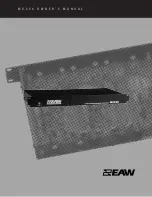
NEO-D9S - Integration manual
Figure 31: Soldering profile for automotive grade NEO-D9S
Modules
must not
be soldered with a damp heat process.
Optical inspection
After soldering the module, consider optical inspection.
Cleaning
Do not clean with water, solvent, or ultrasonic cleaner:
• Cleaning with water will lead to capillary effects where water is absorbed into the gap between
the baseboard and the module. The combination of residues of soldering flux and encapsulated
water leads to short circuits or resistor-like interconnections between neighboring pads.
• Cleaning with alcohol or other organic solvents can result in soldering flux residues flowing
underneath the module, into areas that are not accessible for post-cleaning inspections. The
solvent will also damage the sticker and the printed text.
• Ultrasonic cleaning will permanently damage the module, in particular the quartz oscillators.
The best approach is to use a "no clean" soldering paste and eliminate the cleaning step after the
soldering.
Repeated reflow soldering
Repeated reflow soldering processes or soldering the module upside down are not
recommended.
A board that is populated with components on both sides may require more than one reflow
soldering cycle. In such a case, the process should ensure the module is only placed on the board
submitted for a single final upright reflow cycle. A module placed on the underside of the board may
detach during a reflow soldering cycle due to lack of adhesion.
The module can also tolerate an additional reflow cycle for re-work purposes.
Wave soldering
Base boards with combined through-hole technology (THT) components and surface-mount
technology (SMT) devices require wave soldering to solder the THT components. Only a single wave
soldering process is encouraged for boards populated with modules.
UBX-19026111 - R07
5 Product handling
Page 43 of 52
C1-Public









































